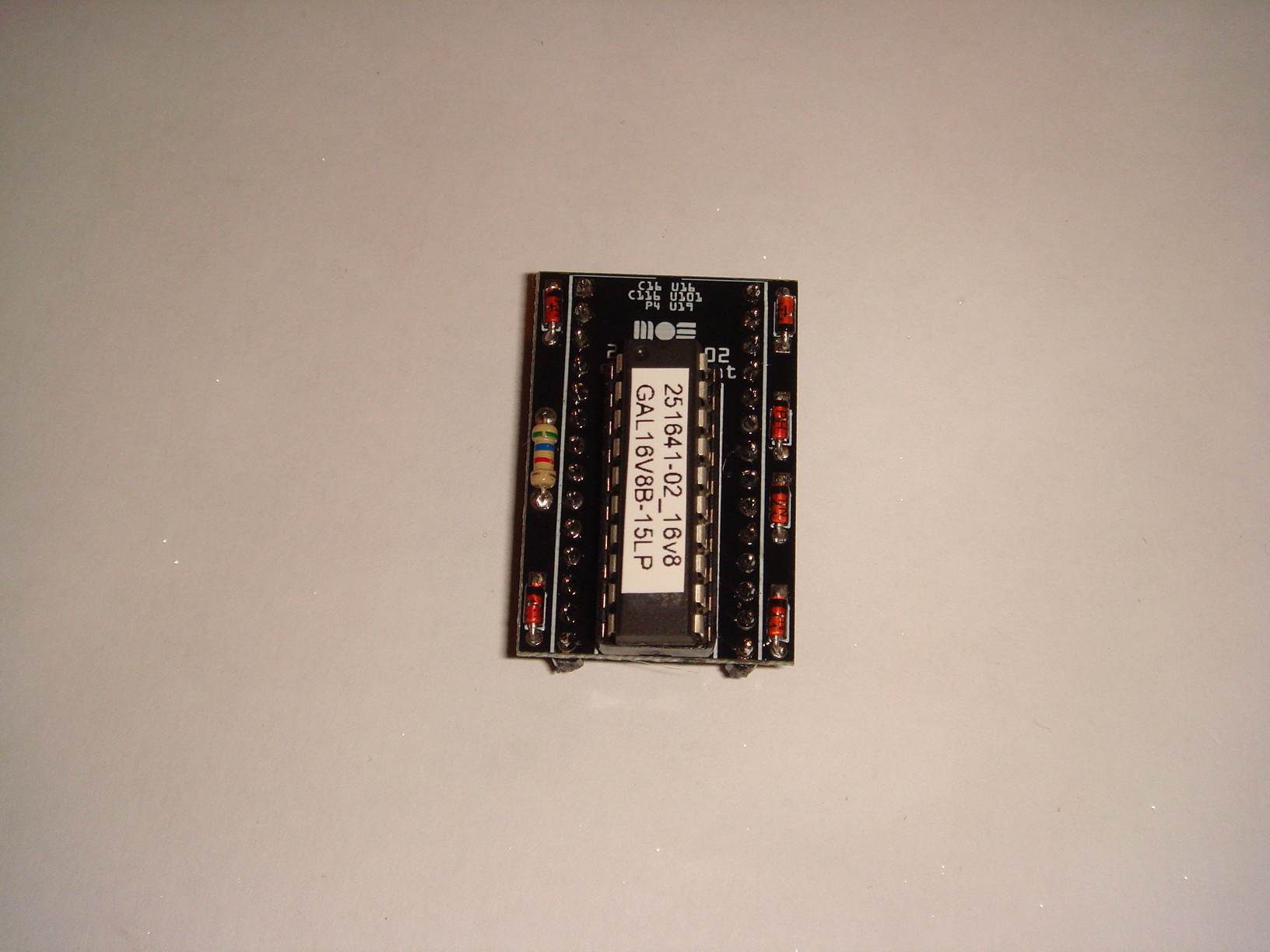Introduction
The PLA16V8 is a GAL PLA replacement for the Commodore TED series computers (such as the Commodore 16, 116 and Plus/4) that I did design after the succes of the PLA20V8. In a TED based computer, the most common point of failure is the 8501 CPU. Therefore the shortage of PLAs is not as severe as for the Commodore TED computers, it is easier to find an original PLA than for the Commodore 64. That said, the PLA in the Commodore TED series computers can fail and you may want to replace it with a more available component. This is now available. the PLA16V8 is ready to service you!You want to ask why we cannot simply reprogram the PLA20V8 with different logic. Well, the reason is that the PLA20V8 divides the 8 82S100 outputs over both GALs in a smart way so that each GAL does not need to have access to all inputs. Unfortunately, it is not possible to split the TED PLA equations in a way that the PLA20V8 PCB can be reused. So a new PCB is needed.
Good news is that the PLA equations for the TED computers are much simpler than the equations for the Commodore 64. As a result less logic is needed to implement it. If you look at the equations you can split the, using a 6 input AND gate. The equations that remain, fit into a single GAL16V8.
The PLA16V8
The result of the design is the PLA16V8, a PLA replacement for the Commodore TED computers that is built out just a single GAL16V8 chip. The 6 input AND gate has been implemented with diode logic. The result is that the PLA16V8 can be built out of simple commodity components, that you can easily stock in your electronics box; if you happen to need a Commodore TED PLA, you can build it on-demand.Where the GAL20V8 is no longer being manufactured, the Atmel/Microchip still produce their ATF16V8.
So what does the PLA16V8 look like? Well, here it is:

The PLA16V8 is a design from scratch based on previously published PLA equations.
How good is it?
Just as good as the PLA20V8. Building a good PLA for the Commodore TED series computers is a lot easier than building a good PLA for the Commodore 64, because:- There exist no CAS race in the TED computers. The TED generates a proper DRAM MUX signal, therefore DRAM timing doesn't depend on the propagation delay of the PLA (the PLA isn't even involved).
- The only PLA signal that is available on the cartridge port is the PHI2 output. Where C64 cartridges can do all kinds of PLA tricks, this is not possible on a TED computer, thus a PLA replacement cannot fail on such tricks.
- The TED computers have less chips and therefore, there are fewer opportunities for the PLA to make a chip misbehave.
How do I build it?
You need the following:- A PCB. See below.
- Two 14-pin male pin headers for the connection to the C64
- Two 10-pin female pin headers, to install the GAL chips in or a 20-pin IC socket.
- A GAL16V8B or ATF16V8 chip. Speed is not important, any speed will work.
| 251641-02_16v8.jed | This is the fuse map that you should program into the GAL. |
Obtaining a PCB
You can order PCBs from me or produce them yourselves. I have uploaded the Gerber files to PCBWay, you can order the PCB here: PCBWay: Commodore TED PLA Replacement. If you order from PCBWay, I will receive a small donation from PCBWay so you will support me that way. However, if you really want to manufacture the PCB somewhere else, I have enabled the Gerber download button on PCBWay, so you can download the Gerber files there and produce it at the PCB manufacturer of your choice.Buying the PLA or just the PCB from me
If you don't want to source the different parts yourself, or just want to buy PCBs, from me personally, I also plan to sell PLAs and PCBs myself. I am using GAL chips from professional electronic component traders. (AliExpress is fantastic, but too unreliable for resell purposes.)I am selling the PLA20V8 as a DYI soldering kit and also bare PCBs on Sell My Retro.
Please make your choice:
It is not mandatory to use Sell My Retro, if you don't like to create an account there. If you would like to
buy directly, fill in the following form:
If you fill in the form, I will send you a payment request via Paypal.
Source code
I have developed the configuration of the GAL chips in the CUPL language with Atmel Wincupl Wincupl is not the best software in the world, but there isn't much better available, and it was able do to the job. I have the following CUPL source code available:
| 251641-02_16v8.PLD | This file contains the CUPL source code of the PLA. |
| 16v8_82s100_adapter_4_schema.pdf | This is the electronic schematic of the adapter. |
Frequently asked questions
None as of yet.Contact
Do you have any questions or would you like to contact me for some other reason? You can e-mail me at daniel.mantione at freepascal dot org, or use the following form:(C) 2021 by DaniŽl Mantione


